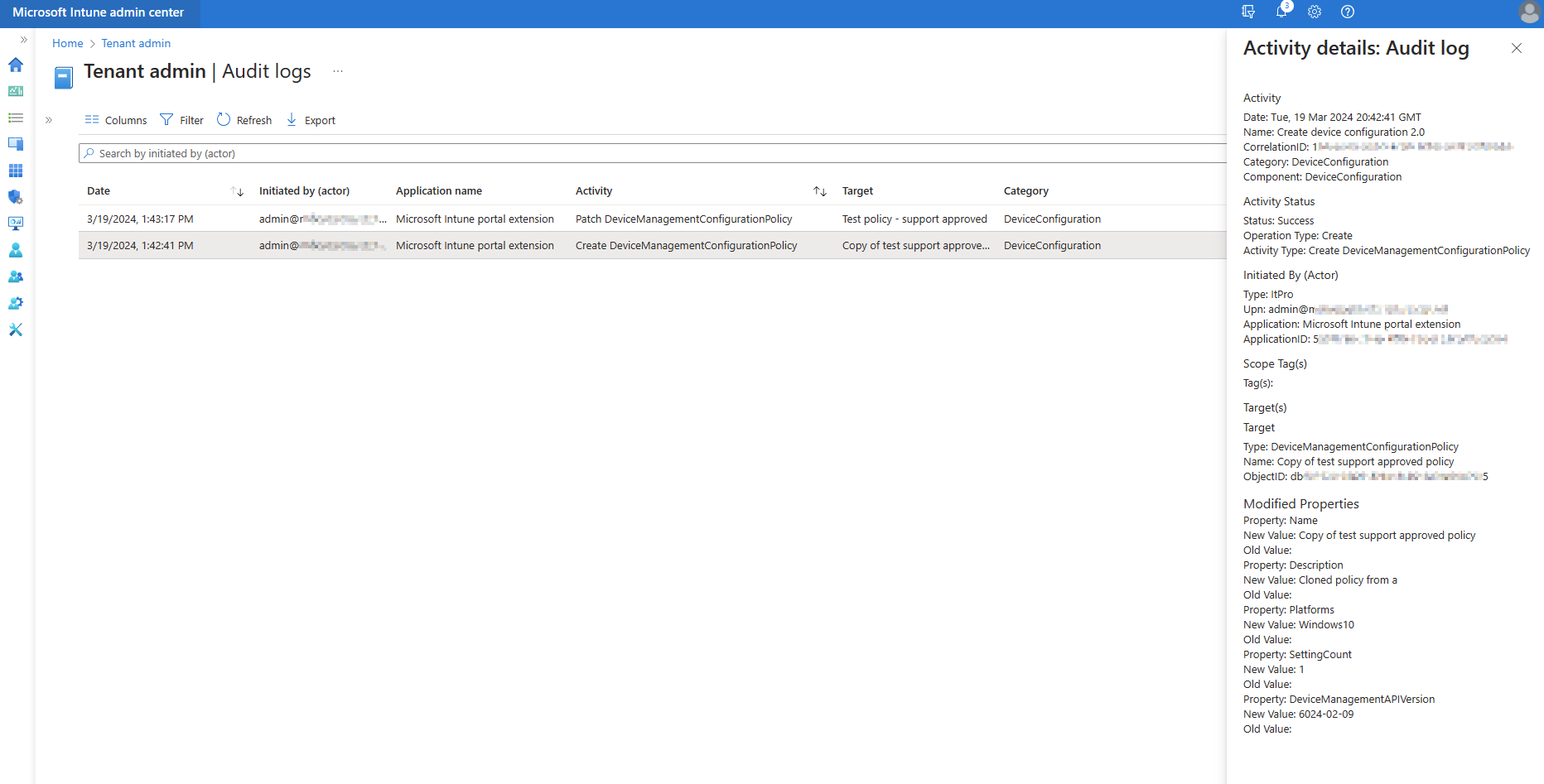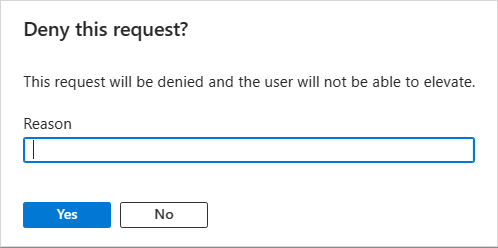Support approved file elevations for Endpoint Privilege Management
Note
This capability is available as an Intune add-on. For more information, see Use Intune Suite add-on capabilities.
With Microsoft Intune Endpoint Privilege Management (EPM) your organization’s users can run as a standard user (without administrator rights) and complete tasks that require elevated privileges. Tasks that commonly require administrative privileges are application installs (like Microsoft 365 Applications), updating device drivers, and running certain Windows diagnostics.
This article explains how to use the support approved workflow with Endpoint Privilege Management.
Support approved elevations allow you to require approval before an elevation being allowed. You can use the support approved functionality as part of an elevation rule, or as default client behavior. Requests that are submitted require Intune administrators to approve the request on a case-by-case basis.
When a user tries to run a file in an elevated context, and that file is managed by the support approved file elevation type, Intune shows a prompt to the user to submit an elevation request. The elevation request is then sent to Intune for review by an Intune admin. When an admin approves the elevation request, the user on the device is notified, and the file can then be run in the elevated context. To approve requests, the Intune admin's account must have extra permissions that are specific to the review and approval task.
Applies to:
- Windows 10
- Windows 11
About support approved elevations
Use EPM policies with the support approved elevation type for files that need an admin's approval before they can run with higher access. They're similar to other EPM elevation rules, but they have some differences that need extra planning.
Tip
To review the three elevation types and other policy options, see Windows elevation rules policy.
The following subjects are details to plan for and expect when you use the support approved elevation type:
Elevation requests
When a user runs a file with the right-click option Run with elevated access, and that file is managed by policy with a support approved elevation rule, Intune shows the user a prompt for sending an elevation request to the Intune admin center.
The prompt lets the user enter a business reason for the elevation. This reason becomes part of the elevation request, which also contains the user's name, device, and file name.
When the user sends the request, it goes to the Intune admin center where an Intune admin with permissions to manage these requests decides to approve or deny it.
The following image shows an example of the file elevation prompt that users experience:
Review of elevation requests
An Intune admin must have view and manage rights for the Endpoint Privilege Management Elevation Requests permission before they can review and approve elevation requests.
To find and respond to requests, these admins use the Elevation requests tab of the Endpoint Privilege Management page in the admin center. Because Intune doesn't have a way to notify admins about new elevation requests, admins should plan to check the tab regularly for pending requests.
Admins who can manage requests for elevation can accept or reject a request. They can also provide a reason for their decision. This reason becomes part of the audit record for the request.
For approvals: When an admin approves an elevation request, Intune sends a policy to the device where the user submitted the request, which enables that user to run the file as elevated for the next 24 hours. This period begins at the time the admin approves the request. There's no current support for a custom time period or cancellation of the approved elevation before the 24-hour period expires.
Once the request is approved, Intune notifies the device and initiates a sync. This can take some time. Intune uses a notification on the device to alert the user that they can now successfully run the file with the Run with elevated access right-click option.
For denials: Intune does not notify the user. The administrator should manually notify the user that their request was denied.
Auditing for elevation requests
An Intune admin who has enough permissions can view information about EPM policy such as creation, editing, and the handling of elevation requests in the Intune Audit logs, available at Tenant administration > Audit logs.
The following screen capture shows an example of the audit log for the duplication of a Support approved elevation policy, originally named Test policy - support approved:
RBAC permissions for elevation requests
To provide oversight for elevation approvals, only Intune administrators who have the following role-based access control (RBAC) permissions in Intune can view and manage elevation requests:
Endpoint Privilege Management Elevation Requests - This permission is required to work with elevation requests that are submitted by users for approval, and supports the following rights:
- View elevation requests
- Modify elevation requests
For more information about all the permissions for managing EPM, see Role-based access controls for Endpoint Privilege Management.
Create policy for support approved file elevations
To create support-approved elevation policy, use the same workflow for creating other EPM elevation rule policies. See Windows elevation rules policy in Configure policies for Endpoint Privilege Management.
Manage pending elevation requests
Use the following procedure as guidance for reviewing and managing elevation requests.
Sign in to the Microsoft Intune admin center and go to Endpoint security > Endpoint Privilege Management > Elevation requests tab.
The elevation requests tab shows pending requests and requests from the last 30 days. Selecting a row opens that entries elevation request properties, where you can review the request in detail.
The elevation request details include the following information:
General details:
- File - The name of the file that was requested for elevation.
- Publisher - The name of the publisher that signed the file that was requested for elevation. The name of the publisher is a link that retrieves the certificate chain for the file for download.
- Device - The device where the elevation was requested from. The device name is a link that opens the device object in the admin center.
- Intune compliant - The Intune compliance state of the device.
Request details:
- Status - Status of the request. Requests start as Pending and can be either approved or denied by an administrator.
- By - The account of the administrator who approved or denied the request.
- Last modified - The last time the request entry was modified.
- User's justification - The justification provided by the user for the elevation request.
- Approval expiration - The time that the approval expires. Until this expiry time is reached, elevation of the approved file is allowed.
- Admin's reason - Justification provided by the admin when an approval or denial is completed.
File information - Specifics of the metadata for the file that was requested for approval.
After an admin reviews a request, they can select Approve or Deny. With either selection, they're presented with the justification dialog where they can provide a Reason with detail about their decision. Providing a reason is optional. The following displays the approval dialog:
For approvals - The admin completes the justification dialog and then selects Yes to approve the request. Intune sends the approval to the device and the end user is notified via a toast notification that they're able to elevate the application.
The end user can now complete the elevation activity by using the Run with elevated access right-click menu of the file.
For denials - The admin completes the justification dialog, and then selects Yes to deny the request.
When an admin denies a request for approval, the elevation request isn't approved. Intune doesn't send a reply to the device and the user isn't notified.
Note
Elevation requests contains all the information needed to create an elevation rule if required, including the complete certificate chain. Support approved elevations also show in the elevation usage data like any other elevation requests.




